
SRI RAMANASRAMAM
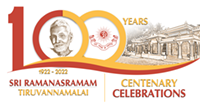
VOL. 17, NO. 9

Dear Devotees,
As the Ashram’s Centenary Celebrations are underway, numerous Ramana Satsang events are taking place around the world, some of which are highlighted in the following pages.
We begin this September issue with the life story of Sivaprakasam Pillai, the poet and philosopher who came to Bhagavan in 1902. On his first visit, Pillai asked pertinent questions about the nature of the self. Bhagavan’s answers would eventually give the world a condensed summary of his teaching in just a few pages, published in 1923 in the spiritual classic, Who Am I?
In the current issue, we continue with the origins of the Tamil parayana in this second segment of a three-part series on its history.
For videos, photos and other news of events, go to https://sriramanamaharshi.org or write to us at saranagati@gururamana.org.
In Sri Bhagavan,
Saranagati
Table of Content
- In Profile: Sivaprakasam Pillai
- Ashram Centenary Celebrations: Sarangi Concert
- Ramanasramam Centenary Celebrations: Sri Lanka
- Events at Sri Ramanasramam: The Governor’s Visit
- Upcoming Ramana Reflections: Bhagavan and AI
- Announcement: August In Focus
- Events at Sri Ramanasramam: Sri Shanmukha Sarma
- Sri Bhagavan’s Ayurvedic Verses: Vadattirku
- Origins: History of the Ashram Tamil Parayana (part II)
- Events at Ramanasramam: Independence Day
- Sadhu Natanananda’s Upadesa Ratnavali §2
- Events in Delhi: Talk at the Nehru (Prime Minister’s) Library
- Events in Delhi: Talk at the Indian Institute of Technology
- Events at Sri Ramanasramam: Neuro Camp
- Events at Sri Ramanasramam: Bhagavan’s 127th Advent
- Obituary: Smt. Vijaya Ranganathan (1944-2023)
- Bhagavan and Cinema: Sivakavi
Calendar of Ashram Events
1st Sep (Fri) Bhagavan’s Advent Day |
23rd Oct (Mon) Saraswati Puja |
3rd Sep (Sun) Samvatsara Abhishekam |
24th Oct (Tue) Vijayadasami |
14th Sep (Thu) Muruganar Day |
28th-29th Oct (Sat-Sun) Full Moon (Grahanam) |
28th Sep (Thu) Full Moon |
8th Nov (Wed) Mastan Day |
15th Oct (Sun) Navaratri Commences |
9th Nov (Thu) Annamalai Swami |
22nd Oct (Sun) Viswanathaswami Day |
12th Nov (Sun) Deepavali |
In Profile
Sivaprakasam Pillai
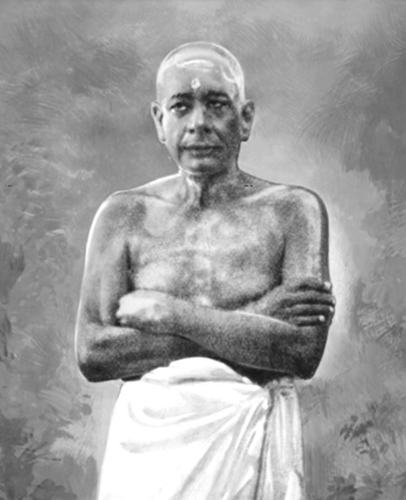
In the aftermath of Mother’s visit to Pavala Kundru in December 1898, Bhagavan and Palaniswami moved up to Virupaksha Cave. During this period, the Brahmana Swami, as he was then called, continued to maintain his silence. Brahmana Swami and Palaniswami found the Om-shaped Virupaksha Cave unlocked and unoccupied. Once settled in this cave of the 16th-century Karnataka saint, Virupaksha Deva, the young Bhagavan found himself for the first time in the company of sadhus, inhabiting nearby caves, many of whom were seeking protection from the noise and distractions of the outside world. While the residents on the hill lived as hermits, they found that they had like interests and needs and thus gradually formed a loose-knit community. Of course, being at Virupaksha also meant that for the first time, Bhagavan and Palaniswami were living amid others and for the first time in their two-and-a-half-year association, Palaniswami was compelled to ‘share’ Bhagavan with others. At last the problem of locating a silent refuge was resolved. Now, anyone seeking the Brahmana Swami’s company would have to make the climb up the slopes of the mountain. Therefore, casual visitors and curious onlookers in the months when Bhagavan was in the Big Temple were no longer an issue.
It was not long after their arrival at Virupaksha that Sivaprakasam Pillai made his appearance. A clerk from Chidambaram in his mid-20s, Pillai revealed his inquisitive disposition from the starto, ardent as he was in his efforts to penetrate the appearances that marked worldly life. During his college years where he had majored in philosophy, the question who is this I who whirls about in the world attached to this body? insinuated itself into Pillai’s daily life. Academic philosophy proved ill-suited to the kind of answer Pillai was in need of, even if at that time he was not altogether clear what it was he was seeking. His questioning was sincere, as though everything depended on it. And he was sufficiently literate enough in matters spiritual to recognize that the solution to his problem could not be found in university text books. Pillai thus took it upon himself to seek out wise counsel and holy persons who might render assistance.
In 1900, following his graduation and subsequent marriage, Pillai was employed in the revenue department of the South Arcot District Collectorate. Eighteen months later, while working as a clerk in the Deputy Collector’s office of the Tirukoilur Division, he was sent to Tiruvannamalai. He narrates in a ‘written submission Sivaprakasam Pillai made to a local court’:
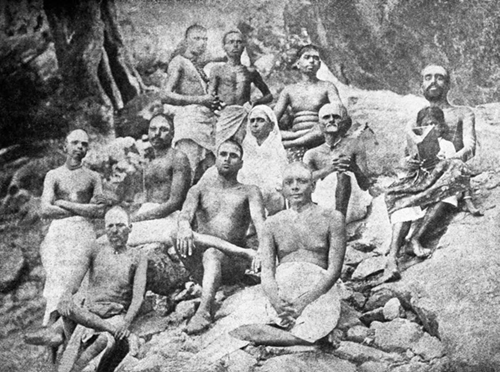
That year the revenue settlement of the Tiruvannamalai Taluk was conducted by the Deputy Collector of the Tirukoilur division. At that time the Tiruvannamalai Taluk was under the jurisdiction of the Tindivanam Sub-Collector. When I went there for this revenue settlement, I heard that there was a young Brahmin swami observing silence on the hill, so I went up to see him and had his darshan. It is this Brahmana Swami who is now known by the name Ramana Maharshi. That year I stayed in Tiruvannamalai for fifteen days—ten days for the revenue settlement and five more days for examining the accounts of the local Taluk office. I asked Brahmana Swami questions about self-enquiry, and he taught me the method of doing it.1
This first encounter seems not to have taken place at Virupaksha Cave. Pillai continues:
In 1902, when I had the Maharshi’s darshan for the first time, he was living in Guhai Namasivaya Cave. On a subsequent visit I met him in the residence of Jada Swami. In those days only Palaniswami was serving him.2
It is not clear why Brahmana Swami and Palaniswami were not living in Virupaksha Cave at this time, but the reader may recall that it was, according to the record, ‘about two years after their arrival at Virupaksha Cave’ that the courts had settled on the ‘question of jurisdiction of Virupaksha Cave’. The victorious litigant assumed control of Virupaksha and began charging a 3-paisa levy to each pilgrim intent on having the Brahmana Swami’s darshan at Viruapaksha. Brahmana Swami responded by moving down the Hill to Sadguruswami Cave, leaving Virupaksha completely abandoned. In time the math agent in charge of Virupaksha recognised the futility of ‘taxing sainthood’ and so invited the Swami back to Virupaksha to remain without any further intrusion from the Cave’s overseers.3
On seeing the young Swami’s face and the radiance that emanated from it, Pillai felt inexorably drawn to him. He waited calmly for the moment and when his chance came, he put forth the question that had occupied him since his university days: Nan yar? (i.e. ‘Who am I?’). As the Brahmana Swami was still in silence during this period, he did not respond with spoken words but rather by gestures, or by scribbling out his responses in the sand or on a slate or on pieces of scrap paper. As the young Swami began to sense the earnestness of his interlocutor, he became more elaborate in his replies. Regarding this first question, ‘Nan yar?’, the young Bhagavan gave a crisp and compact two-word reply: ‘Arive nan’, i.e. ‘knowledge (or consciousness) alone is I’4. In one of his poems addressed directly to Bhagavan, Pillai later recalled his college days and the early efforts at practising ‘who am I?’ before meeting Bhagavan:
When I was studying at the English College, in my foolish mind arose the question, ‘Who is this I who is wallowing in the world?’ Despite searching in various respected books and despite seeking you and asking you [this question], because of the excessive impurity in the mind of this dog-like one, I could not have a deep understanding of the answer to this question. Instead of attaching myself to the grace of the Lord, I was enjoying myself and wandering in all sorts of ways. Because of my past karma I experienced many troubles, and my mind was agitated. 5
This first encounter with young Bhagavan put Pillai on a different course and he began to apply the subtlety of his intellect to Bhagavan’s words. He came to see over time what this question was about and what the process of enquiry really means. He addressed Bhagavan in one of his earlier poems, saying:
I approached you, thinking that I would obtain your grace and redeem myself. With kind words you said, ‘The meaning of the word “I” is the one reality that exists as supreme bliss, as knowledge. It is indestructible, and although it is within this fleshy body, it is still different from it. If you desire to know this supreme essence, you must first get rid of the attachment that takes the body as “I” and then enquire “Who am I?”’ 6
The poem continues with Pillai reporting that Bhagavan had further said:
An intrepid warrior intent on capturing a fort destroys his enemies with a sword as they issue forth from the fort. Then he throws the weapon away and enters the fort. Similarly, while enquiring, even if innumerable vasanas arise and obstruct the Self, without getting frightened and without trying to fulfil the thoughts that arise, one should question, ‘To whom is this thought?’ The answer will be ‘To me’. When you then question yourself, ‘Who am I?’, the thought that arises will be destroyed. As thoughts keep rising (and) are destroyed in this fashion, the ‘I’-thought will finally be destroyed and the incomparable, supreme and exalted essence, ‘I’, will be revealed.7
Bhagavan adds:
One who wants to get a pearl lying at the bottom of the sea will repeatedly dive into the sea…and recover that pearl even if he is initially obstructed and forced out of the water. Similarly, while searching for the Self through the enquiry “Who am I?”, foreign thoughts arise in crores to obstruct, pull and force one out into the world. However, if one repeatedly dives within like the pearl diver searching for the pearl, one can know oneself.8
This first encounter set in motion a chain of events in Pillai’s life. For the next ten years, he continued his job with the Revenue Department of the South Arcot Collectorate which allowed for annual visits to Tiruvannamalai. In 1910, however, he resigned his job, feeling the strong pull to come free of worldly obligations and to spend more time with Bhagavan. Following his resignation, he came to Virupaksha Cave and stayed with Bhagavan for two weeks. For the next six years he came to see Bhagavan four times a year, staying for ten to fifteen days each time:
From 1910 to 1916, whenever I stayed in Tiruvannamalai, I used to have as my lunch prasad from the Arunachaleswara Temple. In the evenings I took my food at Virupaksha Cave. On my visits from 1917 to 1922 I took both of my meals at Skandashram. In those days Muttammal, Mudaliar Patti and Akhilandamma were bringing food for Brahmana Swami. Maharshi’s mother was also cooking for him at Skandashram. In 1922 and 1923, because of personal troubles and anxieties, I did not go to Tiruvannamalai. I only resumed my visits in the latter half of 1924. From then on, I visited the Maharshi twice a year.9
During this period, Pillai worked on various versions of the small booklet which would eventually be called Nan yar? or Who Am I? Working from notes he had jotted down following the first meeting, these notebooks came into Bhagavan’s hands who also worked on them, especially on the essay version which he amended and corrected. Pillai also composed and sang about Bhagavan’s life and about his many experiences with Sri Bhagavan. His poetic works came to be known as Sri Ramana Charita Ahaval, wherein he reports how Bhagavan’s grace saved him from a crisis. Other works include Anugraha Ahaval, where Pillai describes his relations with the young Bhagavan, and Sri Ramana Padamalai as well as devotional outpourings from the heart of this earnest seeker longing to know and follow Bhagavan. (In the last issue of Saranagati we saw in the segment on ‘The History of Tamil Parayana’ how the 15-day cycle of chanting initiated at Skandasramam would eventually come to include some of Pillai’s works, e.g. Sri Ramana Devamalai, Satgurumalai, Vinnapam and the above-mentioned Ramana Padamalai.)
More importantly, Pillai’s lasting legacy would be the thirteen questions and answers from the 1902 meeting with Bhagavan were first printed in 1923 under the title Nan Yar? (Who am I?) which also contained two of his long poems.
It becomes clear from Pillai’s account that Bhagavan was master of the practice of ‘who am I?’ But one cannot help but assume that the question ‘who am I?’ had ceased to be of personal interest to Bhagavan since his death experience in July 1896 resolved all such matters. Therefore, we can assume that Bhagavan only discussed ‘who am I?’ as a pedagogical device in guiding those who came to him. If this is true, then one wonders if it might have been Pillai’s intense involvement with the question and the subsequent work he did in editing the booklet that initiated the gradual formalization and canonization of ‘who am I?’ as a teaching.
After resigning his job, Pillai was in a better position to experience daily life on the Hill with Bhagavan. He writes:
From 1911 onwards, in addition to Palaniswami, Aiyaswami began to serve Bhagavan as well, and in 1913, Perumal Swami came and joined them. All three of them were serving the Maharshi with a sense of equality. Perumal Swami used to go out with Aiyaswami in the evening and return after collecting bhiksha from town. Perumal Swami occasionally left on trips that lasted a few months.10
Pillai’s poetic chronicles also reveal details about the coming into being of Skandasramam:
In those days there was a small, thatched building a few hundred feet above Virupaksha Cave. A devotee called Kandaswami used to live there. He had planted and grown several mango, coconut, and banana trees near his hut. Nearby was a rocky spring that the Maharshi occasionally used to bathe in. Whenever Maharshi went to take his bath there, he would stay for about two hours. It occurred to me that it would be good to have at least a larger thatched shed there as it would prove convenient for these brief stays of the Maharshi. I told Kandaswami about my idea. He agreed to build it and asked me for some financial assistance for the project. I gave him Rs. 25. However, before he had a chance to complete the building, he left Tiruvannamalai and never returned.11
The account Pillai gives here is incomplete but nevertheless gives useful information about the order of events that led to the construction of Skandasramam. Bhagavan had spoken of Kandaswami in glowing terms regarding the prodigious task of levelling the rugged terrain which took nearly ten years. In Day by Day Bhagavan is recorded as having said:
You cannot imagine the state the site was in originally. Kandaswami worked with almost superhuman effort, achieved by his own hands what even four people together could not have done. He removed all the prickly pear, reduced stone and boulder to level ground, created a garden and raised the Ashram. We got four coconut trees for planting. To plant them properly Kandaswami dug huge square pits about ten feet deep. That would give you an idea of the amount of labour he put into the work he took on hand.12
The reader can understand Bhagavan’s point more readily by standing below the front perimeter container wall of the Ashram, and observing the steep pitch of the hill and the height that had to be filled-in with excavated rock. Bhagavan did give credit to Perumal Swami in assisting him but from Pillai’s testimony, it sounds like the stone building we know today as Skandasramam was not the work of Kandaswami as devotees often assume. Pillai writes:
When Kandaswami left Tiruvannamalai, he gave the money collected for building the shed to Narayana Reddy. Perumal Swami, who was a friend of Kandaswami’s, obtained this money from Narayana Reddy, collected some more funds and put up a shed with a galvanised iron roof at a cost of Rs 100. A few months later he dismantled this shed and constructed a stone building that was mortared with lime. I donated Rs. 50 towards the cost of this building. Other devotees, including the people at Isanya Math, also donated towards the cost. The building became known as Skandashram since Kandaswami had done most of the development work on the site. 13
(to be continued)
Ashram Centenary Celebrations: Sarangi Concert

On 28th August as part of the Sri Ramanasramam Centenary Celebrations, Sri Sangeet Mishra and Sri Lalit Kumar made their debut Ashram performance in the Dakshinamurthi Auditorium with approximately 150 in attendance. On behalf of Ramanasramam President Dr. Venkat S. Ramanan, Ashram Manager Sivadas Krishnan presented the performers with prasad which included Centenary shawls bearing the Ashram Centenary Year logo. — ]
Ramanasramam Centenary Celebrations: Sri Lanka

on 20th August President Dr. Venkat S. Ramanan and Ashram Manager Sivadas Krishnan celebrated the centenary of Ramanasramam at Ramanalayam, in Jaffna, Sri Lanka. The Ashram President gave a bilingual talk, seamlessly alternating between Tamil and English on the essence of Bhagavan’s Atma Vichara. Recalling Jaffna’s own Yogaswami and his connection with Bhagavan, the President elucidated the ‘beauty’ of Bhagavan’s nan-yar, namely, that it can be practiced anywhere and in any situation and can assist us in leading a harmonious life. Sri Krishnan spoke on the role of Ramana satsangs around the world in uniting devotees in Bhagavan’s teaching. Contact Ramanalayam at www. sriramanalayam.org. For complete coverage of the President’s speech and other Ashram Centenary events at Ramanalayam:
Events at Sri Ramanasramam: The Governor’s Visit
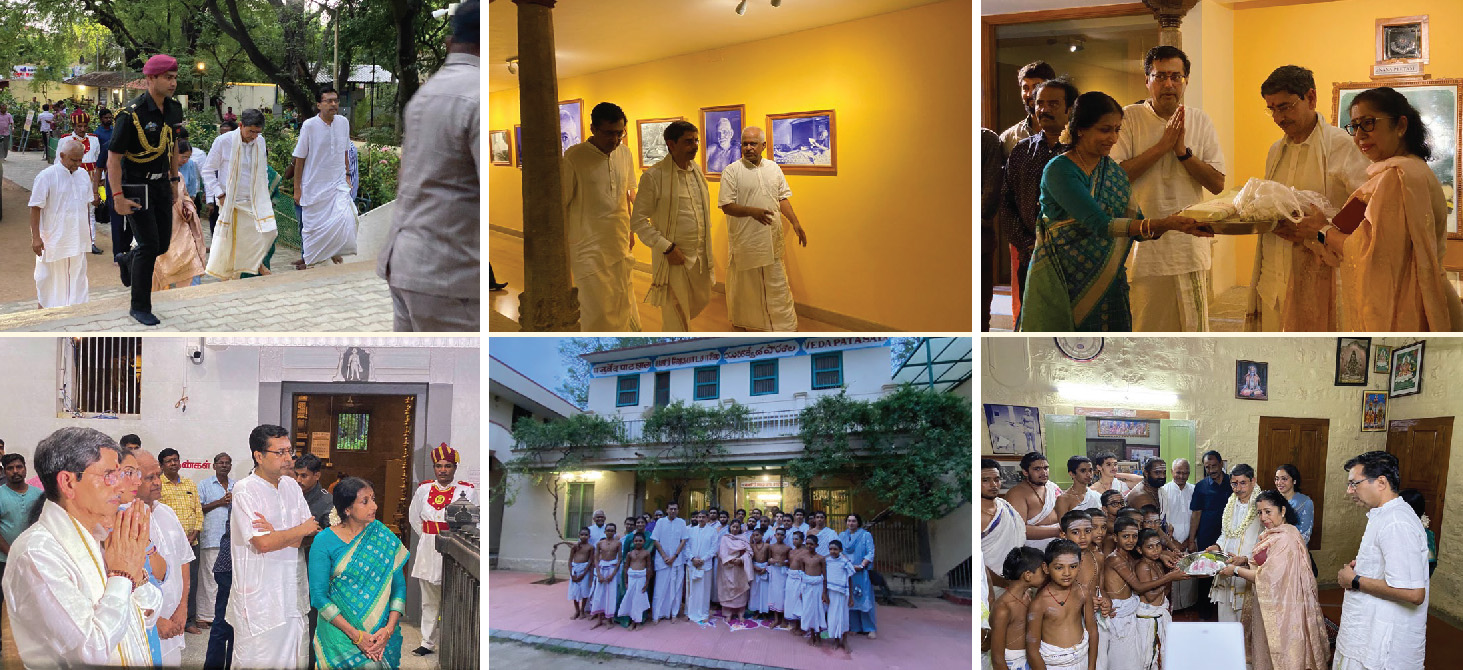
On 10th August, Sri Ravindra Narayana Ravi, 15th governor of Tamil Nadu, came to Sri Ramanasramam. President Dr. Venkat S. Ramanan and Mrs. President were on hand to receive the Governor and his entourage. Sri Ravi previously served as Governor of Nagaland (2019-21) and Governor of Meghalaya (2019-20). —
In an Upcoming Ramana Reflections...

In 2019 it was said that Google’s 54-qubit quantum processor, Sycamore, solved an equation in 200 seconds that would have taken a state-of-the-art supercomputer 10,000 years to solve. If this claim is true, then Google would seem to have attained quantum supremacy and we would be undergoing an exponential leap in computing power where in just a few years the best classical processors may begin to look like dinosaurs. In commenting on developments in quantum computing, theoretical physicist, Michio Kaku, recently said that we are already undergoing a revolution in software, e.g. GPT-4, but if you pair that with a revolution in hardware, namely, exponentially increased processing power, then Kaku says — ‘Watch out!’
Many believe a new dawn is upon us and that AI coupled with quantum computing will usher in a new age, a transition as significant as the advent of agriculture 10,000 years ago. When we consider that agriculture brought simple human tribes from hunting-and-gathering to civilization as we know it, then this remark is truly outstanding. Enthusiasts say that AI is not only successfully curing formerly untreatable diseases and extending human life but will soon transform our economies and may even help us supersede baser human instincts. By contrast, other experts in the field warn of grave perils, some of which are already being experienced worldwide. At the very least, they say, we do not know what social, cultural, economic and geopolitical effects human level machine intelligence will have in the long run, even if by all accounts we can expect a bumpy ride in the near term. What is most alarming is how many AI experts, even the ‘godfather of deep learning’, Geoffrey Hinton, are issuing stark warnings. The fact that 1,000 tech leaders, researchers and AI developers signed an open letter urging a moratorium on the development of AI is itself an astonishing fact and gives the layperson pause.
Experts thought passing the ‘Turing Test’ was 15-20 years off in the future. (The Turing test, named after the renowned British mathematician and computer scientist, Alan Turing, means a machine’s ability to exhibit intelligent behaviour indistinguishable from that of a human, i.e. a sort of human level machine intelligence). Even major daily newspapers were tricked into printing articles unaware that they were in fact written by GPT- 4. AI’s emergent properties have caught AI experts off-guard. Some say the rate of growth is accelerating beyond anyone’s expectations. If human level machine intelligence is indeed upon us, responses are greatly varied—from catastrophizing about what it may bring, on the one hand, to a head-in-the-sand response where the discussion about its potential impact is ignored. Many argue that significant changes in multiple human realms of endeavour may begin in the next 18-24 months. As Ramana devotees pondering the AI question, we may seek to content ourselves with the advaitic dictum that ‘All is the Self ’, which is fair enough. But then we have to ask ourselves if we might be failing to recognise that the non-attachment of a Self-Realised person such as Bhagavan has yet to be cultivated within us. Relatedly would be concerns—whether founded or unfounded—we have for our children and grandchildren inheriting an altogether unpredictable new world. In an upcoming issue of Saranagati, Ramana Reflections we will look to Bhagavan’s teachings to see how they might help us greet this unique juncture in human history. —
Announcement: August In Focus
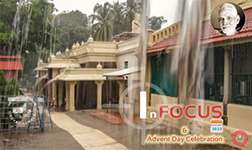
For live streaming of the Tamil Parayana and Vedaparayana each day, Mon-Sat, 5-6.45 pm IST, go to: Daily Parayana live Youtube link .For the August In Focus, see: Infocus August 2023
Events at Sri Ramanasramam: Sri Samavedam Shanmukha Sarma

In a series of talks titled ‘Arunachalamu Ramanachalamu’ from the 14th-18th August, Sri Samavedam Shanmukha Sarma, a renowned spiritual teacher and a Sri Vidya upasaka, discussed the significance and glory of Arunachala, and the immeasurable love and respect Bhagavan had for the sacred Hill. Over the course of five days, Sri Sarma held audiences in the overflowing Grantalaya auditorium spellbound as he presented glimpses into the life of Bhagavan with anecdotal references, mastery in Bhagavan’s works and scholarly references from the Vedas, Upanishads, Bhagavad Gita, and Lalitha Sahasranamam, among others. Sri Sarma explained that Arunachala is not to be understood just as a ‘red hill’, but as a union of Shakthi and Shiva, a powerful symbol of divine compassion, knowledge and the Supreme. Arunachala is the stabilizing force for the wavering mind and circumambulating it can firmly establish the seeker in the state of sanchara samadhi. He expounded on the beauty of Arunachala Pancharatnam, one of the five texts on Arunachala by Bhagavan, collectively referred to as Arunachala Stuti Panchakam.
The concept of the Self was explored with the aid of Bhagavan’s advice from Vichara Sangrahamu, Who am I, and Upadesa Manjari, suggesting introspection into its nature and origins. He explored the relationship between effort, knowledge, devotion and grace, and underscored the importance of surrender and the role of divine grace in achieving liberation. He provided lucid explanations for select verses from Aksharamanamalai, interspersed with stories of Avvaiyar’s devotion and references to Lord Subrahmanya. Sri Sarma concluded his five days of talks with a call for compassion, devotion and realization of the divine essence in all aspects of life. —
Sri Bhagavan’s Ayurvedic Verses: Vadattirku
Vādattirku (for Rheumatism)
Veḷḷai yuḷḷik kiraṭṭi vella
meḷḷi ṉeyyai yicaitta raittuṭ
koḷḷa ṉelli vādaṅ kollaṟ
kuḷḷa didaṉi loṉḏṟu miṉḏṟē.
Veḷḷai uḷḷikku iraṭṭi vellam
eḷḷiṉ neyyai isaittu araittu’uṭ
koḷḷal nelli vādam kollaṟku
uḷḷadu idaṉil oṉḏṟum iṉḏṟē
Grind white garlic with double the amount of jaggery and add gingelly
oil. Take about a table spoon each day for treating rheumatism.
ORIGINS
The History of the Ashram Tamil Parayana (part II)
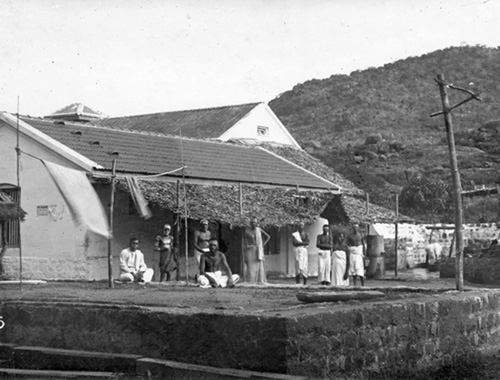
In the first part we discussed the value of recitation and how the Monday parayana consisting of the poems on Arunachala composed by Bhagavan came into being. In this segment we look at the Tuesday and Wednesday parayanas, the first of which consists of Upadesa Undiyar, Ulladu Narpadu and Ulladu Narpadu Anabandam, and the second, of Ekanma Panchakam, Appalap Paattu, Anma Viddai and Devikalottaram.
Upadesa UndiyarIn 1927 Muruganar wrote numerous verses in Tamil attributing all incarnations to Sri Bhagavan. Among them was a story from the Siva Puranam14 about the Daruka Forest rishis who were practising rites in order to acquire supernatural powers. To humble the rishis and make them understand the futility of occult powers, Lord Siva appeared among them as a handsome wandering sadhu. Vishnu followed behind him in the form of a beautiful temptress. Captivated by the temptress’ charm, the rishis neglected their rites while their wives, smitten with instant love for the beautiful and mysterious sadhu, neglected their husbands and their household chores. Infuriated by their wives’ preoccupation with the ascetic, the rishis utilized their magic powers and conjured up an elephant and a tiger and sent them against the two strangers. Siva slew both animals instantly, taking the elephant skin as a robe and the tiger skin as a shawl, whereupon the rishis realized what they were up against. They bowed before the Lord and begged for His instruction.
At this crucial point in the telling of the story it occurred to Muruganar that Sri Ramana alone was qualified to give this instruction as it was the ‘same Bhagavan Ramana’ who originally gave the upadesa to the Daruka Forest rishis. At Muruganar’s insistence Bhagavan composed thirty tercets in the undiyar metre15. In the first fifteen tercets he describes traditional paths and their practices and in the next fifteen, he sets forth the path which leads to Self-knowledge, explaining that it is by renunciation alone that one attains the supreme goal, and that among the various paths of liberation, self-enquiry is the best.
At Yogi Ramaiah’s request, Bhagavan rendered the text into Telugu under the name of Anubhuti Saram. Subsequently he rendered them into Malayalam (at Kunjuswami’s request) as well as Sanskrit (at Ganapathi Muni’s insistence). The Tamil original was entitled Upadesa Undiyar but all versions are now commonly referred to by the Sanskrit title, Upadesa Saram, or ‘The Essence of Instruction’. In Bhagavan’s day, the Sanskrit version was chanted before him daily together with the Vedas. This practice continues to the present day in the samadhi hall.
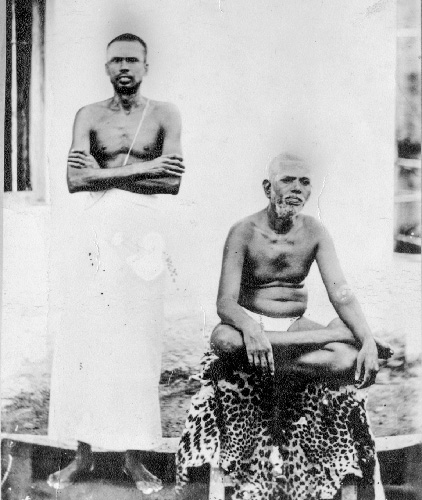 Ulladu Narpadu and Supplement
Ulladu Narpadu and Supplement
Bhagavan composed twenty Tamil stanzas at different times containing his central teachings. Muruganar suggested that Bhagavan write an additional twenty stanzas to complete the conventional forty. Out of these forty, Kavyakanta Ganapati Muni selected two as the invocatory stanzas, so Bhagavan wrote two additional verses to bring it to forty. As Bhagavan was not particularly concerned about the authorship of these verses, but rather in communicating the reality of the Self, he borrowed from classical advaitic texts in Sanskrit, adapting them to the collection and translating them into Tamil. But as devotees wanted all forty verses to be original, the borrowed verses were eliminated, and Bhagavan composed new stanzas in their place. Later, a supplement consisting of forty verses was added, which included the verses culled from the original forty.16
Of his written works, these eighty verses are the most comprehensive exposition of Bhagavan’s teaching. Several translations have been made of them and various commentaries written on them. They have been published as separate volumes under the titles Ulladu Narpadu, Sad-Vidya and Truth Revealed. Bhagavan also rendered these verses into Telugu prose under the name of Unnadi Nalubadi and into Malayalam under the name of Sad Darshanam.
Wednesday: Ekanma PanchakamThese Five Verses on the Self are the last composed by Bhagavan. They were written in February 1947 at the instance of Suri Nagamma, the Ashram chronicler and author of Letters from Sri Ramanasramam. Bhagavan wrote them first in Telugu utilizing the Tamil venba metre. He then translated them into Tamil. Since there was already a composition by Sankaracharya called Atma Panchakam, Bhagavan called this composition Ekanma Panchakam.
Appalap PaattuIn the latter years at Virupaksha Cave, Bhagavan’s mother did most of the cooking. Bhagavan was a skilled cook and often helped in food preparation. On one occasion in 1914 or 1915, his mother secretly went begging for the ingredients to make poppadums, the crisp round, wafer-thin, fried snack made of black gram flour. She called on her son to help her. ‘You make these appalams’, he said, ‘I will make another kind’. Bhagavan continues: She used to sing a rice song, a soup song and other such songs, all with Vedantic meanings. No one appears to have written an appalam song. So I felt that I should compose one. She was very fond of songs, [and] felt she could learn another. By the time the preparation of the appalams was over, my song also was finished. ‘I will eat this appalam (the song about the appalams) and you eat those that you have made’, I told her.
Events at Ramanasramam: Independence Day
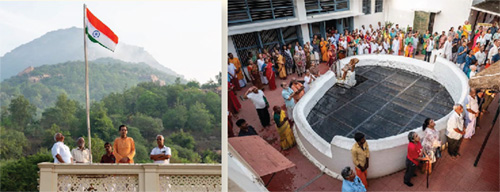
On 15th August, Sri Ramanasramam and all of India celebrated the nation’s 77th Independence Day, marking 76 years of freedom. According to Ashram tradition, Ashram President Dr. Venkat S. Ramanan unfurled the national flag atop the dining hall following morning milk offering. —
Anma Viddai
One day a devotee came before Bhagavan and in reference to this poem’s opening lines — ‘Lo, very easy is Self-Knowledge, Lo, very easy indeed’ — asked how it could be so, how liberation could be easy. Bhagavan gave the ready reply, ‘How should I know?’ Then pointing to Muruganar said, ‘Go and ask him, he wrote it!’17
Years before in April 1927 Muruganar had handed Bhagavan these lines with the request to elaborate18 . Bhagavan’s response was the five-stanza verse called Anma Viddai or ‘Self Knowledge’. Bhagavan gives this history of the poem: Muruganar had written the pallavi and anupallavi and wanted the charanams. He said he could not possibly complete the song, as somehow no more lines would come to him, and so requested me to complete it. Thereupon I wrote this song. First I wrote only one charanam. But Muruganar wanted at least four. Thereupon I made three more. Finally I recollected that I had not made any mention of Annamalai and so made a fifth charanam, making mention of Annamalai in it, as Ponnambalam (Chidambaram) is mentioned in the stanzas of the song in the Nandanar story on which our song is modelled.19
Sri Devikalottaram — Jnanachara Vichara Patalam This text, ‘The Knowledge that Transcends Time Revealed to Devi’ is one of twenty-eight agamas, the traditional Hindu scriptures regarded as divinely inspired and thereby no less authoritative than the Vedas. Devikalottara contains 24,000 verses. The eighty-five verses Bhagavan collected here are from the 65th Chapter (in Jnana Kandam) and relate awe-inspiring instructions in advaita and the path of knowledge. Sri Bhagavan translated this text in the early days at Virupaksha Cave and wrote this introduction:
This work is one of the upa-agamas and explains the supreme wisdom to be attained by mature souls and their mode of life expounded by the Supreme Lord Siva to Devi Parvati. It is the essence of all agama sastras on matters of spiritual knowledge. This is verily the boat which can rescue the mortals struggling hard, sinking and rising, in the sorrowful ocean of samsara—the endless cycle of birth and death—and take them by the direct path to the shore of liberation. Let all earnest seekers after Truth, instead of groping in the dark, bewildered, and losing their way, adopt the aid of this direct path and reach the supreme state of bliss and peace. 20
(to be continued)Sadhu Natanananda’s Upadesa Ratnavali §2
Of all the names attributed to God, ‘I’ is the first name.
On scrutiny, when the reality, the Heart [ullam], seems to spread out from the (physical) heart in the form of consciousness to assume many thousands of names, the very first of these is ‘I’. Thus should you know. — Guru Vachaka Kovai, §712
The pure form of Iswara shines like beads strung in the hearts of all jivas as non-dual Being. When Iswara manifests in manifold forms, innumerable names arise and are attributed to Him. Of all the names, the name ‘I’ is the first to arise. How can this be? God or Iswara has two forms, i.e. ‘featureless’ (vilakshanam) and ‘with features’ (salakshanam). There is no knowledge of externalities in the Sat aspect of God. By contrast, knowledge of externalities only appears within God in His three-fold form—Iswara, world and jiva. How is this to be understood? As the undifferentiated power (the Sat aspect of God) dissipates into manifold power, the first experience to arise in the individual mind is the feeling or sense of ‘I’. By virtue of this naturally arising and apparently permanent ‘I’-feeling, individuals are able to spontaneously accept the existence of God free of doubt. Because of the existence of this feeling called ‘I’, jivas attribute, albeit erroneously, names and forms to God. It is due to this (process) that ‘I’ is considered the first name of God, and God’s non-perceptible and permanent nature is thereby known.
Events in Delhi: Talk at the Nehru Memorial (Prime Minister’s) Library
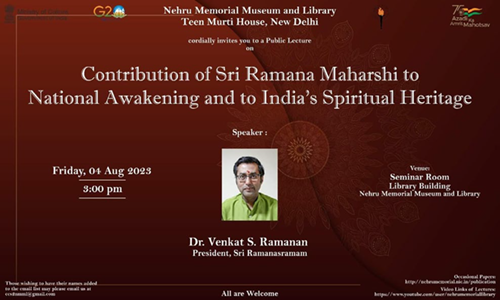
Sri Ramanasramam President Dr. Venkat S. Ramanan gave a series of talks in Delhi during the first week of August, two at an annual conference of the Delhi IIT (see below), one at the Delhi Ramana Kendra, and on Friday the 4th August, a talk at the Nehru Memorial Museum and Library (Prime Ministers’ Museum and Society) entitled, ‘Contributions of Sri Ramana Maharshi to National Awakening and to India’s Spiritual Heritage’. The Ashram President outlined the Maharshi’s impact on major 20th century luminaries including poets, court magistrates and historical figures involved in India’s freedom struggle, including Gandhiji who had the highest respect for the Maharshi and would routinely send his associates who once included Shankarlal Banker, Rajendra Prasad and Jamnalal Bajaj to Ramanasramam for spiritual recharging. The Ashram President quoted the poetess Sarojini Naidu, who once made a remark about ‘the two Mahans, namely, the Maharshi who gave us peace, and the Mahatma who would not let us rest one moment in peace—were both working for the spiritual regeneration of India’. —
Events in Delhi: Talk at the Indian Institute of Technology
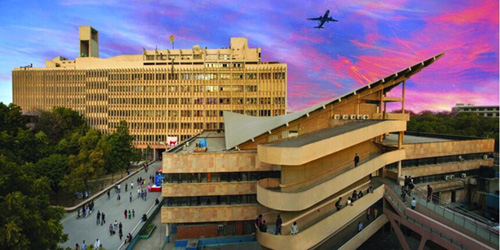
On 3rd August, Ashram President Dr. Venkat S. Ramanan spoke at the prestigious Indian Institute of Technology, Delhi, on self-enquiry and referred to Bhagavan as one of the greatest sages of modern India. As the one ultimate reality expounded by Advaita Vedanta and one who spoke from direct experience, he cited Bhagavan’s contribution to India’s spiritual legacy and heritage as the restoration and adaptation of the ancient path of Atma Vichara for the modern world. —
Events at Sri Ramanasramam: Neuro Camp

On August 16-17th the Ashram Dispensary conducted a neuro camp with Dr. Vikram Singh Thakur. Patients were treated for conditions like headache, strokes, neuropathy, neck and back pain and other neurological conditions. Approximately 150 patients were treated each day of this month’s 2-day camp. Neuro camps take place in the Ashram Dispensary and Dr. Vikram will return in November for the next neuro camp. —
Events at Sri Ramanasramam: Bhagavan’s 127th Advent Celebrations
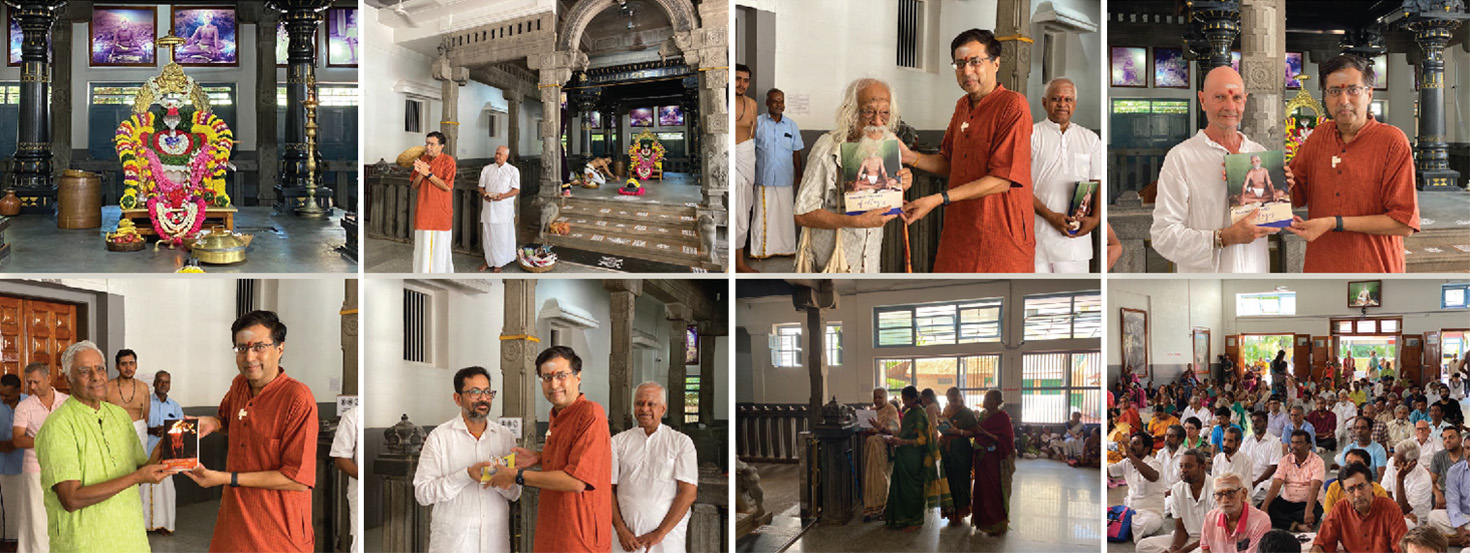
On Friday 1st September, devotees gathered for the celebration of Sri Bhagavan’s Advent to Arunachala 127 years ago. The Madurai Mandiram devotees led by Sri Somasundaram made their usual annual pilgrimage to the Ashram and sang Tamil parayana in the early morning. The Melbourne Australia Satsang group of thirty led by Dr. Sanjay Raghav also followed the pilgrimage route from Madurai. Just prior to the early morning puja, Ashram President Dr. Venkat S. Ramanan released numerous new Ashram publications and a new music CD.
In 2010, the Ashram President’s brother, the late Ravi Ramanan, had suggested a music recording based on Sri Ramana Sannidhi Murai. All these years later, Bhaje Ramana Namam, vol II, (retaining the ‘call and response’ style of vol I with musical arrangements and voice by Sangeetha and Swaminathan Venkataraman) was released (see Following the book release, the 127th Advent Day celebrations—also commemorating this Ashram Centenary Year— continued with arati, and an arati song led by Susheela Maani using Muruganar’s verses welcoming Bhagavan to Arunachala. In the afternoon, the President travelled to Chennai and gave a well-received Advent talk at Nanganallur High School. —

Obituary: Smt. Vijaya Ranganathan (1944-2023)

Born in Coimbatore to Sri Venkatachalam and Smt. Pankajammal on 30th November 1944, Smt. Vijaya Ranganathan was the youngest of six sisters and three brothers. In 1968, she married Ranganathan who had as a child learned of Ramana Maharshi through his grandfather Swami Premananda. Ranganathan and Vijaya shared a deep devotion to Bhagavan. They lived in Mumbai for many years where they were actively engaged with the Ramana Kendra community. In 1974, Vijaya had the experience of initiation while looking at one of Bhagavan’s photographs. Shortly afterwards, in 1975, they began regularly visits to Sri Ramanasramam in Tiruvannamalai. From 1982-1991, Ranganathan taught at Bahrain University, and even in this distant land, their home was ever open to Ramana devotees.
Once receiving the call to return to India, Ranganathan resigned his position, and in 1994, the couple settled in the proximity of Sri Ramanasramam. From the beginning, Vijaya’s devotional life centred on the Ashram. With dedication and humbleness, she participated in the Ashram’s daily activities, not least of all, chanting and recitation. She was fastidious in attending Tamil Parayana and the monthly Punarvasu chanting and regularly assisted Smt. Mahalakshmi and Smt. Susheela in arranging and practicing the raga program, a task which included making hand-written copies of the chanting texts. Vijaya served Bhagavan with love and warmly hosted family members, friends, and devotees alike. Vijaya compassionately helped the sick, the poor and the needy, and all those who had need of a listening ear.
Vijaya fell ill about six years ago and could no longer attend Ashram activities. With her husband constantly at her side, she was taken care of her with selfless love during these final years. Following a fall at home in the spring of 2023, Vijaya became bedridden. She peacefully merged at the Feet of Arunachala on 6th August, her sweet smile in evidence till the very end. Vijaya’s gentle, warm-hearted nature will be remembered by all who were blessed to have known her. —
Bhagavan and Cinema: Sivakavi (in Tamil with English Subtitles)

In the last issue, we posted the link for the newly uploaded Harischandra (part 1, part 2) with English subtitles. This supplemented links for the previously uploaded Nandanar (part 1, part 2), Sant Tukaram (part 1, part 2) and Mirabai. Since then, devotees have edited and uploaded the Tamil film Sivakavi with English subtitles. This film was viewed by Bhagavan on 6th November 1946. Devaraj Mudaliar writes about the moment:
As it was proposed that tonight the film ‘Sivakavi’ should be shown, Bhagavan took up Pulavar Puranam (Story of the Poets), and read out portions to us. When he came to the stanza in which it is said that the poet fell repenting at Subramanya’s Feet and said, ‘I would not care for you. Still, such was your grace that you of your own accord appeared before me, set me right and took me into your grace. How can I thank you for your mercy?’ Bhagavan could hardly restrain his tears. He was choked with emotion. I have often observed how such things move him deeply (Day by Day, p. 339).
For viewing Sivakavi part I, see: Youtube link . For part II: Youtube link.
[Editor’s note: Ashram devotees are hoping to locate copies of the Hindi films Karna and Bhartruhari as well as the Tamil film Bhakta Pundarika, films seen by Bhagavan. If anyone has information regarding either of these, please write to the Ashram President at posrm@gururamana.org or to mhighburger@gmail.com.]
Endnotes
- 1 From the ‘Deposition’ as reproduced in Power of the Presence,Part One, p. 40.
- 2 Ibid., p. 41.
- 3 Self-Realisation, Chapter XII.
- 4 Who am I? (An English translation of Nan Yar?) Introduction, check
- 5 The ‘Deposition’ (Power of the Presence, Part One, p. 43.)
- 6 Ibid.
- 7 Ibid.
- 8 Ibid., p. 44.
- 9 Ibid., p. 41.
- 10 Ibid.
- 11 Ibid.
- 12 See Day by Day, (9-12-45 Morning). See also the deposition to the commission in 1938, where Bhagavan says that preliminary work on the site began as early as 1902. The bulk of the hard labour was probably done between 1906-1915. (MP Jan 1988, p. 51.)
- 13 From the ‘Deposition’ as reproduced in Power of the Presence, Part One, p. 41.
- 14 The story is retold by Sri Muruganar in a long poem called Tiru Undiyar in his Sri Ramana Sannidhi Murai.
- 15 Undiyar is an exacting metrical form in classical Tamil poetry; a tercet is a verse of three rhyming lines.
- 16 References for the verses Bhagavan borrowed from other sources are listed at the end of the translation of each verse.
- 17 This story is from T.R. Kanakammal
- 18 Muruganar’s lines were a deliberate recast of a popular Tamil poem that begins, ‘Lo, very difficult is self-knowledge’.
- 19 From Day by Day, 26-2-46 Morning.
- 20 Tamil Recitations at Sri Ramansramam, p. 66.
